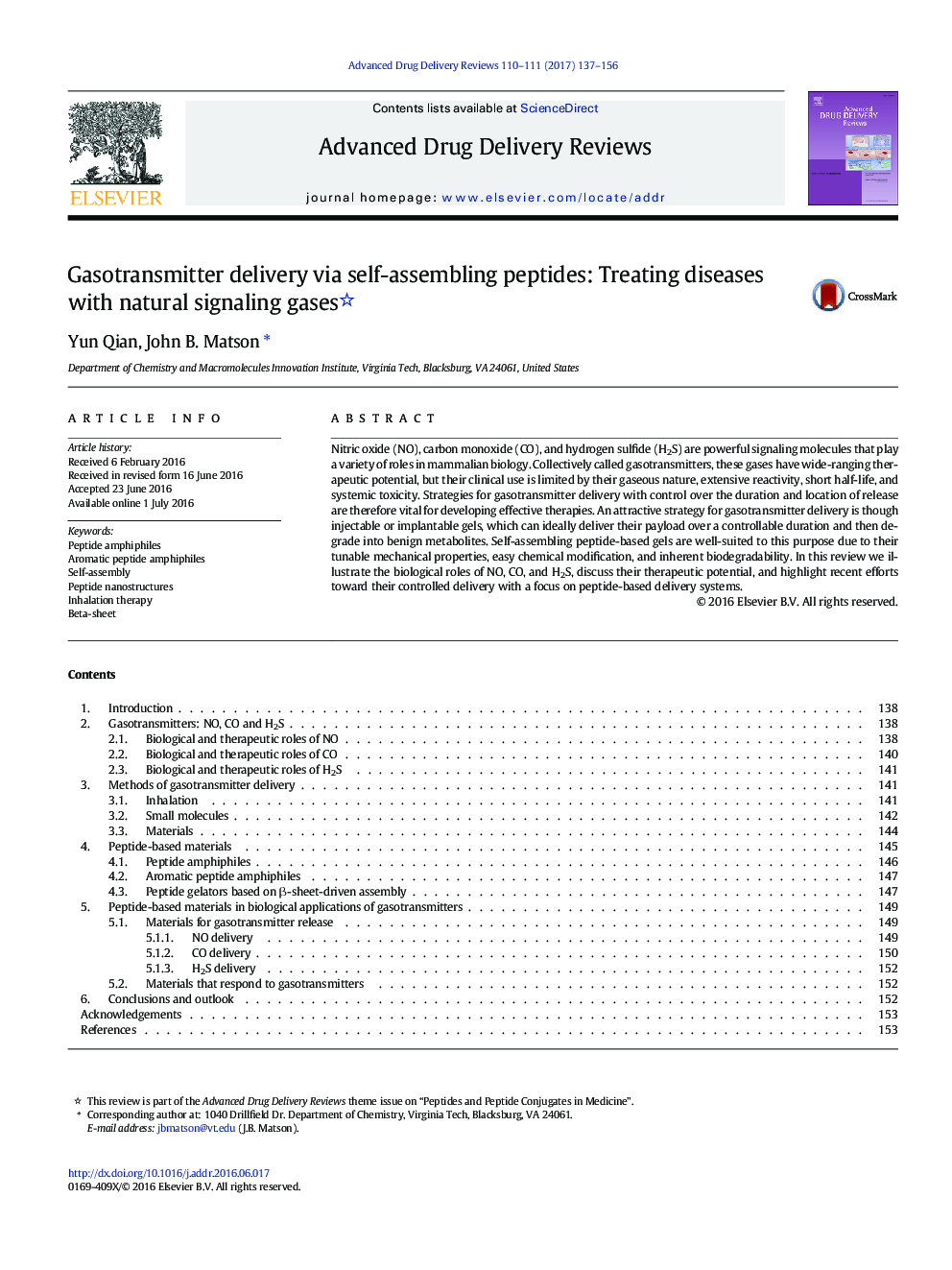| Article ID | Journal | Published Year | Pages | File Type |
|---|---|---|---|---|
| 5519998 | Advanced Drug Delivery Reviews | 2017 | 20 Pages |
Nitric oxide (NO), carbon monoxide (CO), and hydrogen sulfide (H2S) are powerful signaling molecules that play a variety of roles in mammalian biology. Collectively called gasotransmitters, these gases have wide-ranging therapeutic potential, but their clinical use is limited by their gaseous nature, extensive reactivity, short half-life, and systemic toxicity. Strategies for gasotransmitter delivery with control over the duration and location of release are therefore vital for developing effective therapies. An attractive strategy for gasotransmitter delivery is though injectable or implantable gels, which can ideally deliver their payload over a controllable duration and then degrade into benign metabolites. Self-assembling peptide-based gels are well-suited to this purpose due to their tunable mechanical properties, easy chemical modification, and inherent biodegradability. In this review we illustrate the biological roles of NO, CO, and H2S, discuss their therapeutic potential, and highlight recent efforts toward their controlled delivery with a focus on peptide-based delivery systems.
Graphical abstractDownload high-res image (191KB)Download full-size image
